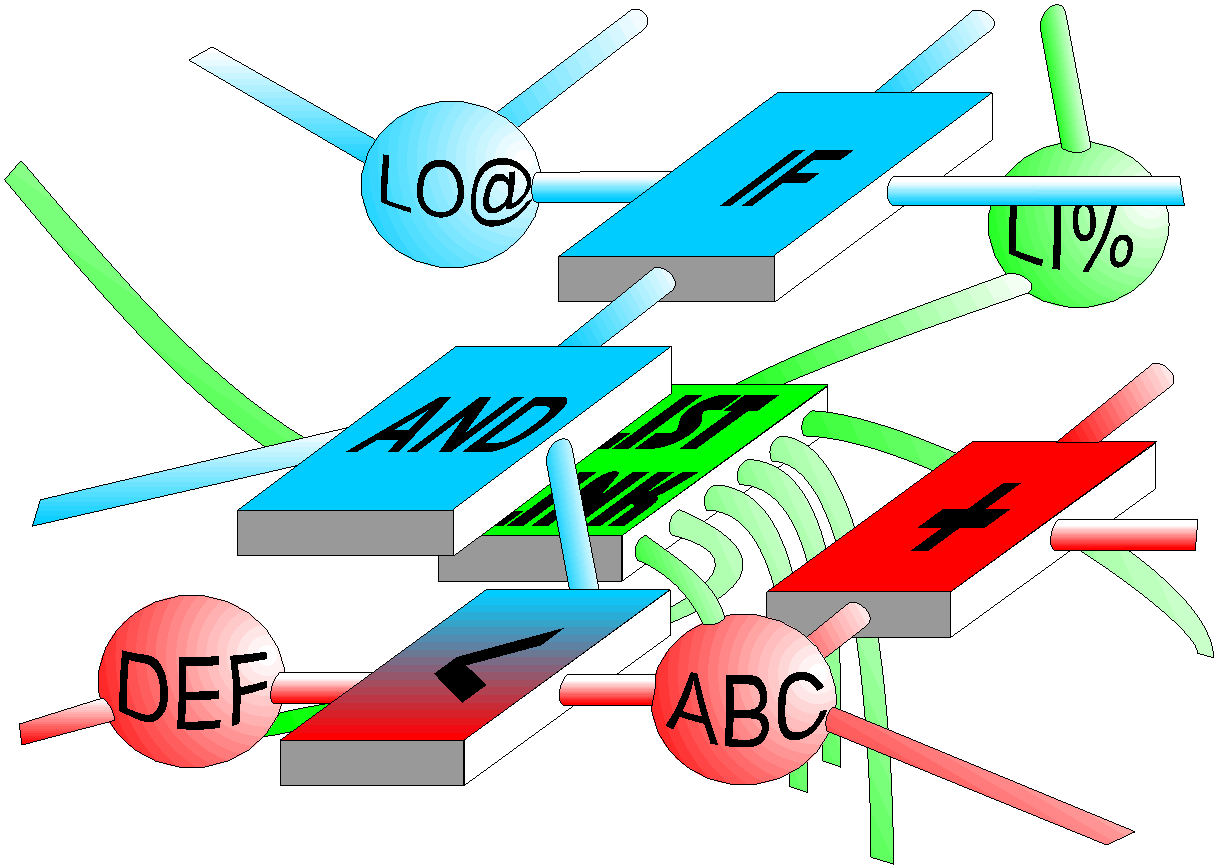

Tupai's eCognition uses Knowledge Network Methodology to represent knowledge. The network is undirected, and can transmit complex information, information which may potentially change the network itself. Information is processed at operators in the network, each receiving information at its connections, responding to that information and rebroadcasting it again. The operators can be analytic, like PLUS and AND, or store experience about relations, like that between Age and VehicleType. As change occurs at its connections, an operator gets control, and can decide to broadcast in any direction, even back along the information that just came in.
The connections in the network support the transmission of logicals, numbers, numeric ranges, strings, lists. This information can represent tentative situations, such as the customer seems to be interested in a subset of products, or we have an approximation of the age - somewhere in the range 30 to 50. Decisions can be made based on tentative or approximate information, and backtracked out of, or firmed up later. The backtracking mechanism uses Change Image Storage - changes are stored, so a previous state can be recovered if need be. There is no stack of local copies, so useful information that has been learnt can be recovered across the backtracking.
The operators in the network represent the elemental or atomic level of analysis, and each operator determines its own activity, so the network is micro-scheduling what it does - there is no need to wait for a large block of work to finish before doing something else that may invalidate it. This allows influences to be effective when they should - when two models that were built separately are joined together, each can reach deep into the workings of the other.
The combination of an undirected network, operators responding to change at their connections, the transmission of complex information, micro-scheduling of activity and the ability to backtrack, permits the solution of many difficult and intractable problems. The most powerful aspect is the potential for change in network topology. At the least, it allows us to quickly get nearer to the solution, so an interaction with the customer seems more sensible. A sales transaction on a Web Site may not sound difficult, except that the customer expects the seller to infer a great deal about the customer’s needs without asking too many pointed questions.
The knowledge network typifies the Non-Algorithmic approach. Programming of algorithms becomes too difficult as we attempt to handle increased complexity, or cannot control the order of events. The user may roam all over a web site and provide scraps of information in any order, making it very difficult for a program to handle. The undirected network simply broadcasts whatever it is given, the connections in the network controlling phasing and delivery of the information.